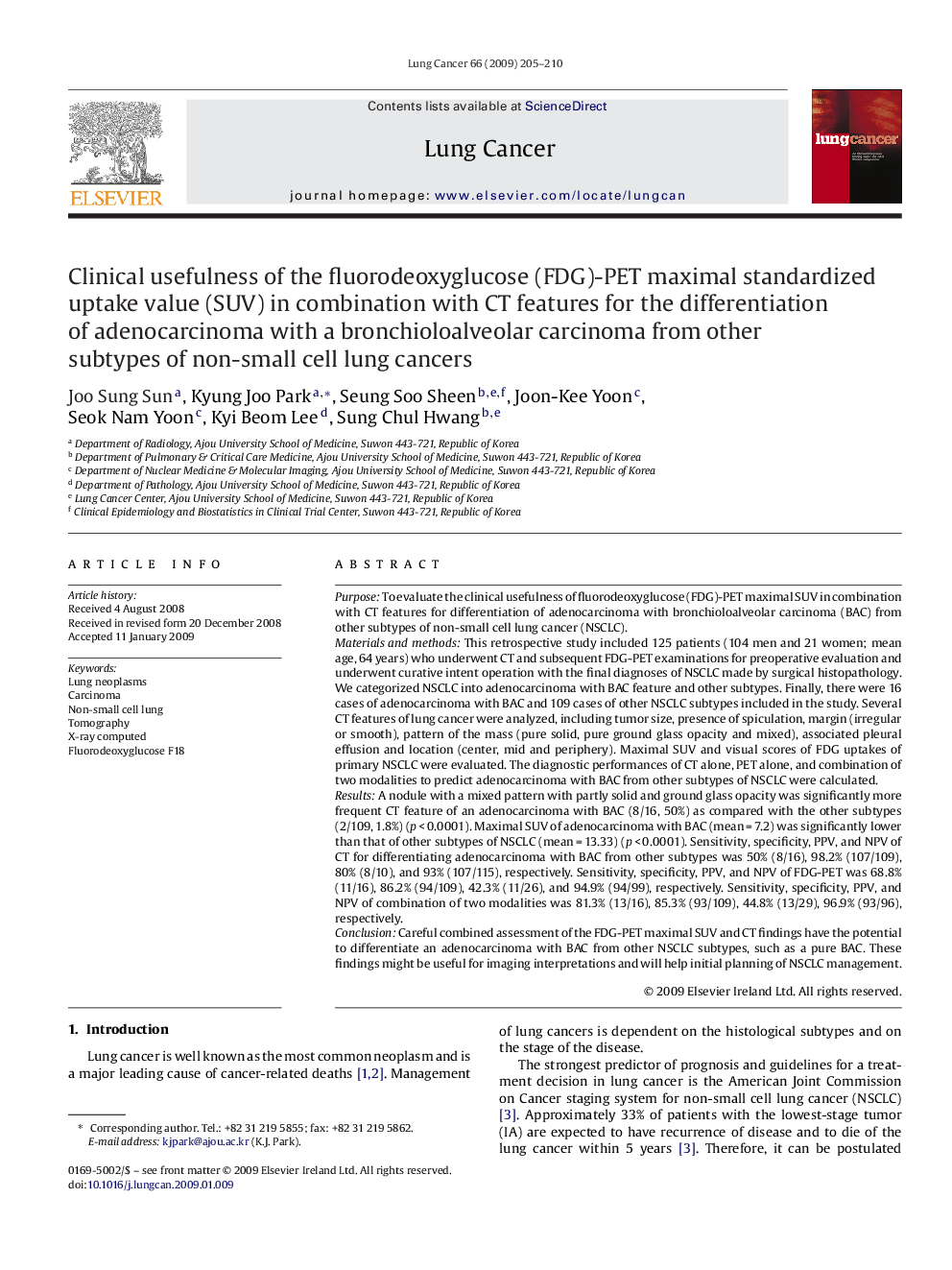| کد مقاله | کد نشریه | سال انتشار | مقاله انگلیسی | نسخه تمام متن |
|---|---|---|---|---|
| 2142989 | 1088330 | 2009 | 6 صفحه PDF | دانلود رایگان |

PurposeTo evaluate the clinical usefulness of fluorodeoxyglucose (FDG)-PET maximal SUV in combination with CT features for differentiation of adenocarcinoma with bronchioloalveolar carcinoma (BAC) from other subtypes of non-small cell lung cancer (NSCLC).Materials and methodsThis retrospective study included 125 patients (104 men and 21 women; mean age, 64 years) who underwent CT and subsequent FDG-PET examinations for preoperative evaluation and underwent curative intent operation with the final diagnoses of NSCLC made by surgical histopathology. We categorized NSCLC into adenocarcinoma with BAC feature and other subtypes. Finally, there were 16 cases of adenocarcinoma with BAC and 109 cases of other NSCLC subtypes included in the study. Several CT features of lung cancer were analyzed, including tumor size, presence of spiculation, margin (irregular or smooth), pattern of the mass (pure solid, pure ground glass opacity and mixed), associated pleural effusion and location (center, mid and periphery). Maximal SUV and visual scores of FDG uptakes of primary NSCLC were evaluated. The diagnostic performances of CT alone, PET alone, and combination of two modalities to predict adenocarcinoma with BAC from other subtypes of NSCLC were calculated.ResultsA nodule with a mixed pattern with partly solid and ground glass opacity was significantly more frequent CT feature of an adenocarcinoma with BAC (8/16, 50%) as compared with the other subtypes (2/109, 1.8%) (p < 0.0001). Maximal SUV of adenocarcinoma with BAC (mean = 7.2) was significantly lower than that of other subtypes of NSCLC (mean = 13.33) (p < 0.0001). Sensitivity, specificity, PPV, and NPV of CT for differentiating adenocarcinoma with BAC from other subtypes was 50% (8/16), 98.2% (107/109), 80% (8/10), and 93% (107/115), respectively. Sensitivity, specificity, PPV, and NPV of FDG-PET was 68.8% (11/16), 86.2% (94/109), 42.3% (11/26), and 94.9% (94/99), respectively. Sensitivity, specificity, PPV, and NPV of combination of two modalities was 81.3% (13/16), 85.3% (93/109), 44.8% (13/29), 96.9% (93/96), respectively.ConclusionCareful combined assessment of the FDG-PET maximal SUV and CT findings have the potential to differentiate an adenocarcinoma with BAC from other NSCLC subtypes, such as a pure BAC. These findings might be useful for imaging interpretations and will help initial planning of NSCLC management.
Journal: Lung Cancer - Volume 66, Issue 2, November 2009, Pages 205–210